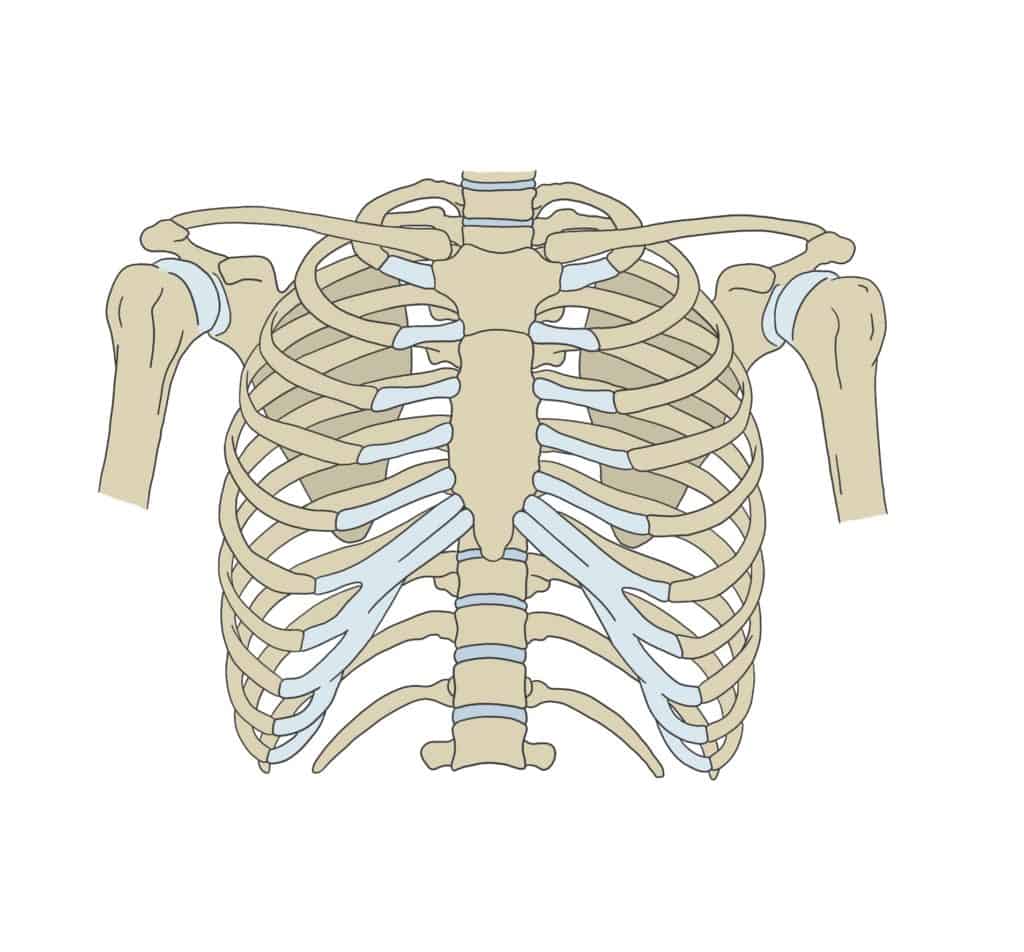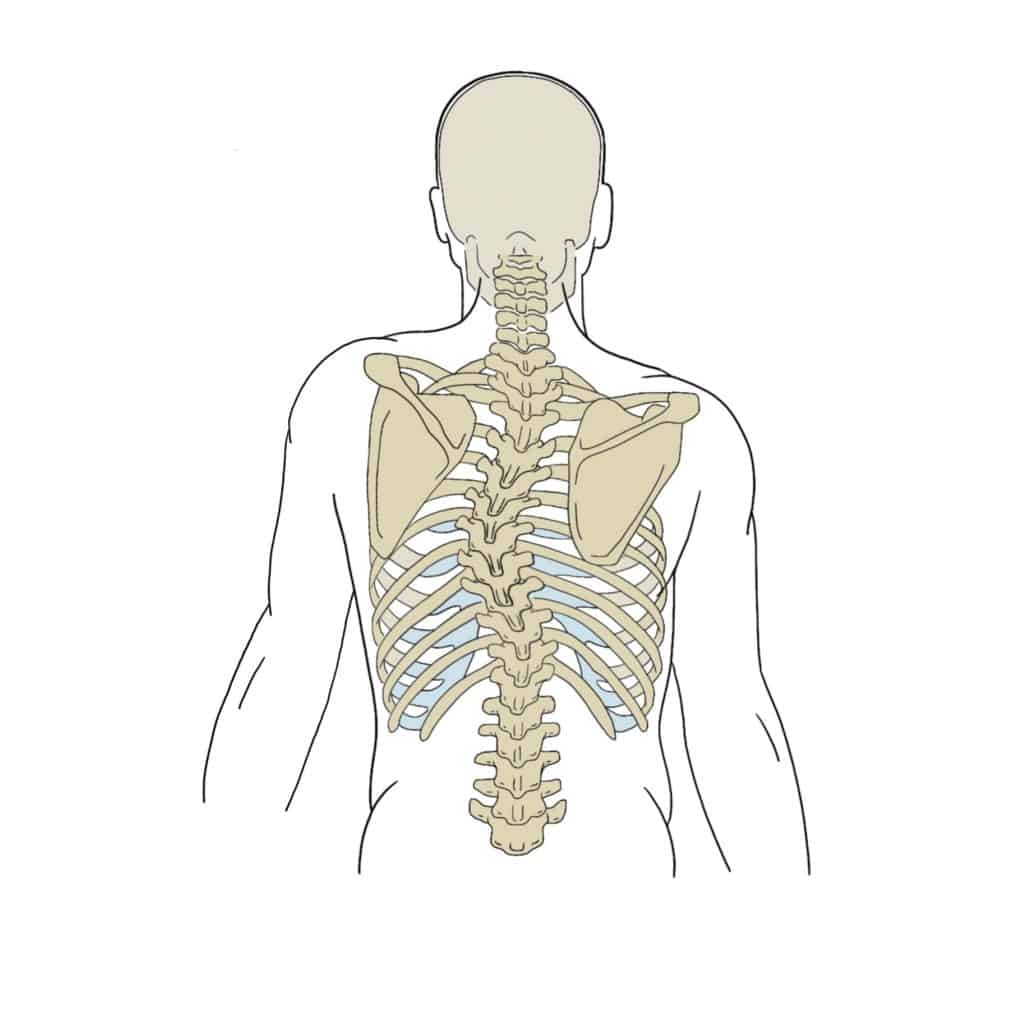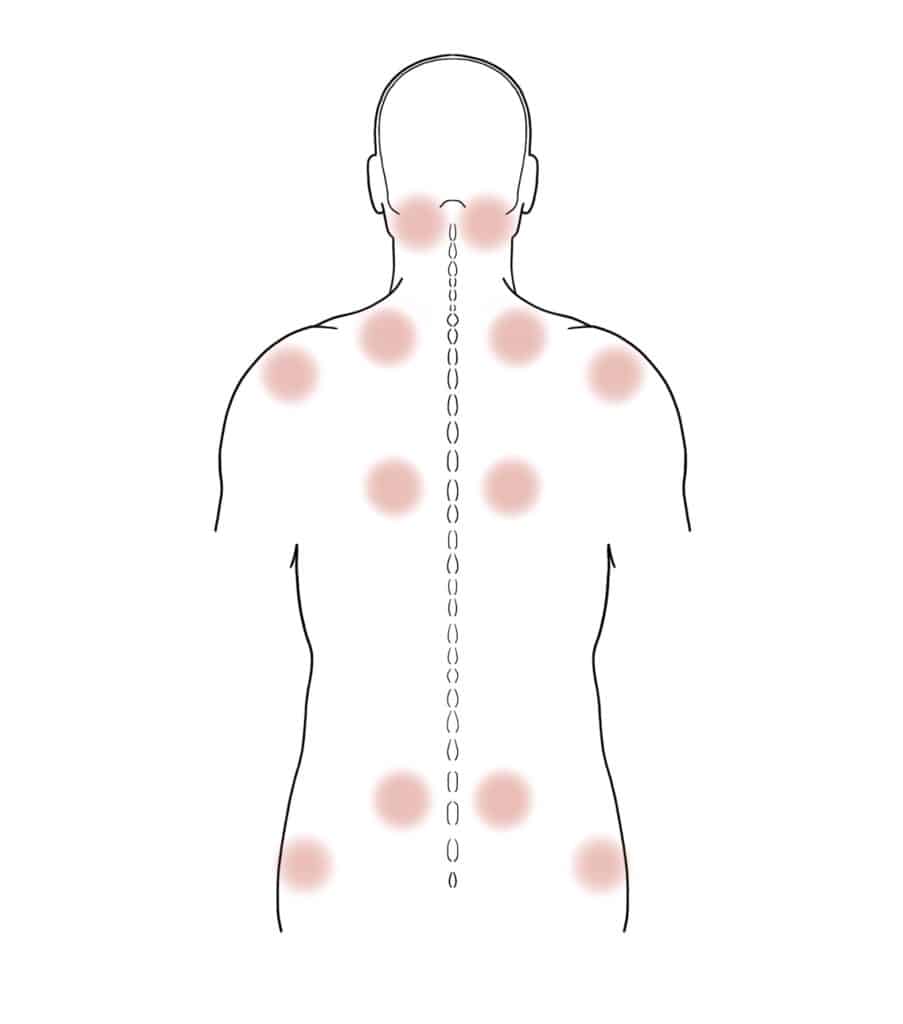Upper Back and Thorax
Treatments targeted at specific conditions.
Rib Subluxation
Rib subluxation is a painful condition where the rib head, which usually articulates nicely with the vertebra, moves out of its correct position. In doing so, the rib irritates the nerve that runs very close to it, causing pain and often muscle spasm.
Rib subluxation is usually caused by twisting and stretching movements, such as using a pulley to start a lawnmower, trying to reach something in the back seat of the car or reaching over and stretching in bed to turn off the alarm. They can also be subluxed as a result of traumatic injury such as a rugby tackle or road traffic accident.
If you have subluxed a rib you will feel pain in your back, this can be a constant dull ache but is often accompanied by intermittent muscle spasm. You may also have difficulty taking a deep breath in.
The good news is, that although rib pain is incredibly painful for an individual, it responds incredibly well to osteopathic treatment, especially manipulation and usually resolves very quickly afterwards.

Costochondritis
Costochondritis is when inflammation occurs where your ribs meet your sternum (breastbone). Tietze Syndrome is a similar, but much rarer condition, which causes swelling as well as pain over the sternum.
The pain is usually sharp and located on the sternum (breastbone) but can sometimes mimic that of a heart attack and other heart conditions. It is worse when you take a deep breath in. Whilst costochondritis usually affects people over the age of 40, Tietze syndrome is far more common in young adults and teens.
Sternal pain can occur for many reasons such as: A seat belt injury after a car accident or falling from a horse. The onset is not always traumatic however; severe coughing or excessive physical exertion can also aggravate these costochondral joints.
Costochondritis can improve on it’s own after a few weeks, but can last for a few months. Osteopathy may to help speed up this process and help you to manage the symptoms.

Intercostal Muscle Strain
An intercostal strain is a strain of the muscles between the ribs. You may experience moderate to severe pain on one side of the ribcage, particularly whilst breathing in. It is a relatively common cause of chest pain.
Intercostal muscle strains are usually caused by twisting and stretching movements, such as using a pulley to start a lawnmower, trying to reach something in the back seat of the car or reaching over and stretching in bed to turn off the alarm. They can also be strained as a result of traumatic injury such as a rugby tackle or road traffic accident.
Your osteopath can help resolve the symptoms associated with intercostal muscle pain and offer advice to help prevent it occurring again in the future.

Scoliosis
Scoliosis is a curvature of the spine. If you have scoliosis you may notice that you have a visible twist or curve in the spine or that one shoulder blade appears higher or more prominent than the other.
If a therapist has previously told you that you have scoliosis, please do not panic. On its own, scoliosis does not usually cause pain; in most cases the curvature of the spine is mild and often goes unnoticed by the individual. It can however, predispose you to lower back pain due to the adaptations that the body must make to compensate for the curvature.
Whilst no therapist can straighten your spine for you, your osteopath advise you on appropriate exercises to encourage your body to work in a more even fashion and help prevent any future problems arising.
In severe cases the curvature of the spine is more drastic, which can cause disabling effects on the individual. Osteopathy can help to manage the symptoms of these patients and help to improve the function of other areas in order to help the body compensate for the structural differences.

Fibromyalgia
Fibromyalgia is a very complex, long-term condition that causes widespread pain throughout the body.
There is no known cure for fibromyalgia. Exercise is well known to often help relieve symptoms but is sometimes difficult to achieve with the pain levels that patients have to endure. Fibromyalgia is often co-existent with headaches, temporomandibular joint disorders and many other conditions.
Our osteopaths understand and respect the fact that fibromyalgia affects each person differently and adjust their treatment and management approach accordingly. Our aim is to provide much needed relief to the patient in order for them to be able to manage their symptoms and continue every day life activities as much as possible.

Postural Pain/ Occupational Health
Whilst not exactly a diagnosis, ‘Postural pain’ is very common. At The Sussex Osteopaths we see a lot of people in pain related to their jobs, daily lives and hobbies. Whether it is sitting in one position for a long period of time, manual labouring on a building site or carrying a heavy rucksack to school; all these things, over time, can cause our body discomfort.
Most commonly postural pain will present in the upper back/neck area and across the shoulders, but it can also affect the lower back and pelvis as well as cause headaches.
Our osteopaths can provide treatment to combat the physical demands of jobs and daily lives as well as prescribe specific exercises and lifestyle changes to improve and maintain strength, mobility and flexibility.

